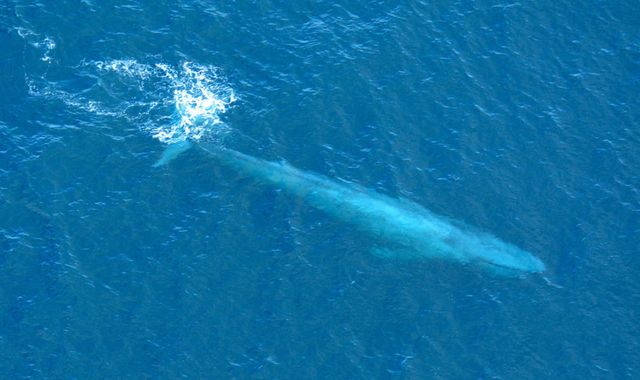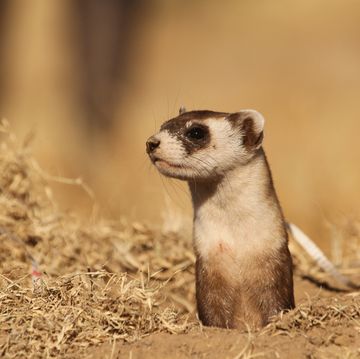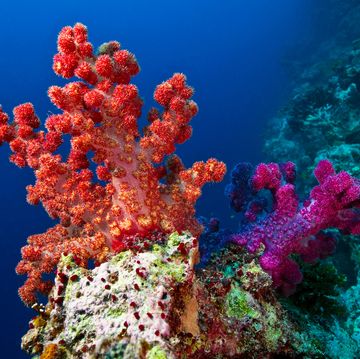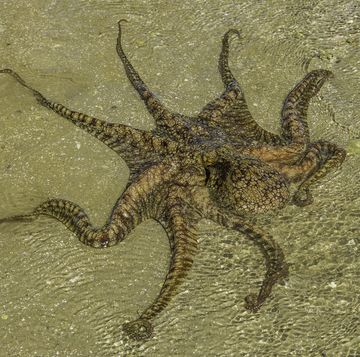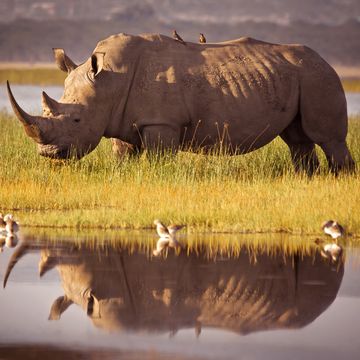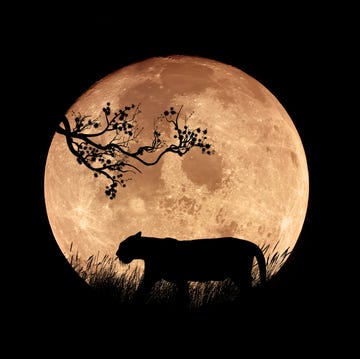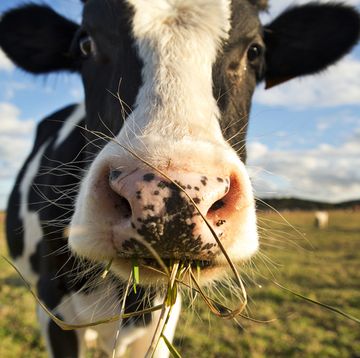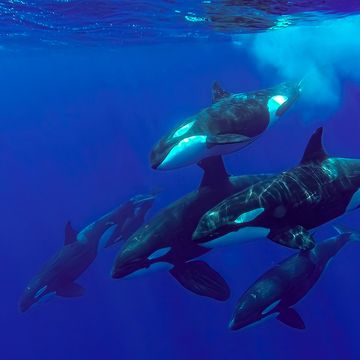Blue whales are the largest animals ever known to exist. Bigger than dinosaurs, bigger than mastodons, a blue whale can reach up to almost 100 feet long and have been weighed at as much as 191 tons. Members of the baleen family of whale, blue whales have a size that feels prehistoric. Now, scientists have developed a new theory of how modern day animals got that big. It has to do with climate change.
All baleen whales eat tiny krill, crustaceans found in all the world's oceans. However, changes in warming waters moved the krill into more concentrated areas, allowing a few whales eat way more krill than others. But while that basic theory offers a framework for increased whale size, it doesn't give an exact timeline for what happened, says Jeffrey Goldbogen, who runs a lab at Stanford studying baleen whales. "Baleen evolved about 20 million years ago," he tells NPR, "and we didn't see the evolution of gigantism until about very recently, about 3 million to 5 million years ago."
Goldbogen, in a new paper, looks at how quickly the whales were able to grow, from 10 tons to 100 tons in just a few million years. It allows him to speculate that the ice age, which took place around 2.6 million years ago, had something to do with the gigantism. At the time, wind began pushing surface waters off-shore, forcing deeper ocean waters underneath surface waters to replace it. This is called upwelling and essentially fertilizes ocean waters.
As the ice age led to increased water runoff into the ocean, upwelling pushed nutrients and krill out to where the baleen whales were. Combined, the two forces led to ultra-dense concentrations of krill.
"As a result," his co-authored paper states, "we live in a time of giants; unlike any other time in geological history, modern oceans are rich with extremely large bodied suspension feeders that rely on dense but patchily distributed prey resources." But, the paper says, the projected "climate-driven changes to ocean ecosystem structure, diversity, and productivity presage a decrease in critical habitat for large-bodied baleen whales and other suspension feeding vertebrates, highlighting the ecological vulnerability of these giants operating on an energetic knife-edge."
Climate change could very well determine if whales stay at their massive, awe-inspiring size, shrink down, or die out.
Source: NPR
David Grossman is a staff writer for PopularMechanics.com. He's previously written for The Verge, Rolling Stone, The New Republic and several other publications. He's based out of Brooklyn.
